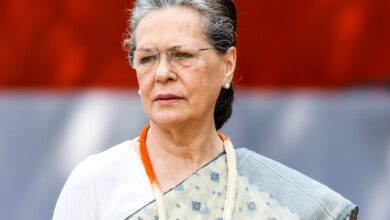Bengaluru: The Siddaramaiah-led Karnataka government’s decision to collect funds from temples with over Rs 10 lakh annual income has given birth to a political fight between the Congress and the BJP. The move has angered the saffron camp, which charged the ruling Congress with trying to fill its ’empty coffers’ with temple money. A related Assembly bill was passed on Wednesday.
Leader of Opposition R Ashok said that Chief Minister Siddaramaiah was “stealing from the collection boxes of temples”, and alleged that the government was looking to collect “10% commission from the income of temples”.
The Congress sought to turn the tables on its rival saying the saffron party had effected an amendment in 2011 to seek funds from high-income Hindu shrines. To recall, the Karnataka Hindu Religious Institutions and Charitable Endowments (Amendment) Bill was passed in the state Assembly on February 21.
Explaining the bill, the Karnataka government said that it was necessary to enhance the amount of common pool fund, include a person skilled in Vishwa Hindu Temple architecture and sculpture in the committee of management of notified institutions and to form district and state-level committees to improve shrines and infrastructure for the safety of pilgrims.
Transport and Hindu Religious Endowments Ramalinga Reddy told reporters that the provision was not new but has existed since 2003.
He also said an amendment was brought by the then BJP government in 2011 to collect funds from high income group temples.
Karnataka Hindu Religious Institutions and Charitable Endowments Act 1997 came into force on May 1, 2003 and provisions were made for Common Pool Fund under Section 17 of the said Act, he explained.
Common Pool Fund was implemented in the year 2003 itself. Section 17 of the Act was amended in 2011 to collect funds from high income group temples so as to aid temples with lesser income under the said fund.
The Rajya Dharmika Parishad, a committee to improve the temple management for the benefit of pilgrims, is authorised to utitlise Common Pool, Reddy said.
According to him, there were 3,000 C-Grade temples in Karnataka, which have an annual income of less than Rs 5 lakh from where the ‘Dharmika Parishad’ gets no money.
Temples earning between Rs 5 lakh and Rs 25 lakh were classified as B-grade temples, from where 5 per cent of the gross income had been going to the committee since 2003.
The Dharmika Parishad had been getting 10 per cent revenue from those temples whose annual gross income was above Rs 25 lakh since 2003.
“Now what we have done is we have made it free from paying to Dharmika Parishad if the income is up to Rs 10 lakh. We have made provisions to collect five per cent from temples whose gross income is between Rs 10 lakh and less than a crore. 10 per cent will be collected from temples whose income is above Rs 1 crore. All this amount will reach the Dharmika Parishad,” Reddy said.
The Minister said there are 40,000 to 50,000 priests in the state whom the state government wants to help.
“If the money reaches Dharmika Parishad then we can provide them insurance cover. We want their families to get at least Rs 5 lakh if something happens to them. To pay the premium we need Rs 7 crore to 8 crore (annually),” he explained.
(With Agency Inputs)


